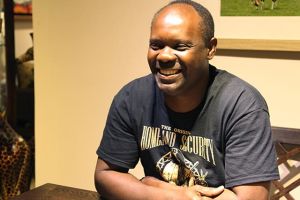As China's economy grows, so does reform call
Updated: 2013-10-20 10:14
(Xinhua)
|
|||||||||||
BEIJING - China's economic rebound in the third quarter of 2013 has taken some pressure off its leaders, but weakening economic trends toward the end of the period left them still needing to further steer structural reforms.
China's gross domestic product (GDP) rose 7.8 percent in the July-September quarter compared with one year earlier, accelerating from the second quarter's 7.5-percent increase and a rise of 7.7 percent in the first quarter.
Growth in the first nine months of the year was 7.7 percent, data from the National Bureau of Statistics (NBS) showed on Friday.
The third-quarter result is in line with market expectations and keeps the country on track to meet its 7.5-percent annual growth target for the year, though growth may dip again in the final quarter.
Peng Wensheng, analyst at the China International Capital Corp., forecast GDP growth would ease to 7.5 percent in the fourth quarter because of a high comparative base from last year. He expects growth to rebound again in the first half of 2014.
NBS spokesman Sheng Laiyun summed up the economic situation as "stable with major indicators staying within the rational range" and predicted the trend would continue in the following period.
However, the optimism was eroded by a softening momentum in September, which is indicated by a slower growth in industrial output, fixed asset investment and retail sales. Sluggish global demand also weighed on growth, with exports unexpectedly down 0.3 percent year on year last month.
Although economists have ruled out imminent threat for the world's second-largest economy, they believe policy makers are still under pressure to spur domestic demand, with the recovery momentum remaining tepid.
After three decades of fast expansion, China has been trying to shift from an export-driven growth model toward one that is driven much more by domestic demand. That contributes to a slowdown from the double-digit growth registered in previous years.
For the first nine months, consumption helped drive up growth by 3.5 percentage points, less than the 4.3 percentage points jacked up by investment. Exports, however, dragged down the third-quarter GDP growth by 0.1 percentage points, said Sheng Laiyun.
To ensure a healthier long-term growth, China must steer away from its previous growth model that was dependent on investment and exports, and the key to a successful transformation is reform, according to Lian Ping, chief economist at the Bank of Communications.
It's widely expected that comprehensive reforms will be planned out during the Third Plenary Session of the 18th Communist Party of China Central Committee due in November. Many analysts expect the meeting to push ahead with administrative, financial and tax reforms, which will set the agenda for economic changes in the country.
In the short and medium term, China will be happy to sacrifice some economic growth for reforms and economic structural transformation, said Liu Yuanchun, assistant dean of the School of Economics at Renmin University of China.
Chinese leaders have signaled a greater tolerance for a slowdown as they seek to stabilize growth while rebalancing the economy.
"China's economic fundamentals are sound," President Xi Jinping said in a speech delivered at the eighth G20 summit last month. "China has realized that it has to advance structural reforms in order to solve the problems hindering its long-term economic development, even though it will mean slower growth," he added.
Premier Li Keqiang echoed the remarks, saying, "As long as the economy runs within the reasonable range, we will keep the macro-economic policy generally stable, and focus on shifting the growth model and on structural readjustment."
Related Stories
Investment still huge driver of economy: Experts 2013-10-19 08:26
Fund manager survey sees economy slowing 2013-10-18 17:51
FDI increases as economy strengthens 2013-10-18 08:08
Today's Top News
Beijing works to spur global development
Scientists requested government to plant GM crops
Travelers to Europe bypass attractions of Brussels
China is reaching its tipping point
Li urges greater effort on reforms
'Constructive ideas' on thorny issues needed
US deal key to nabbing fugitives
JPMorgan, DOJ reaches $13b deal
Hot Topics
Lunar probe , China growth forecasts, Emission rules get tougher, China seen through 'colored lens', International board,
Editor's Picks

|

|

|

|

|

|





